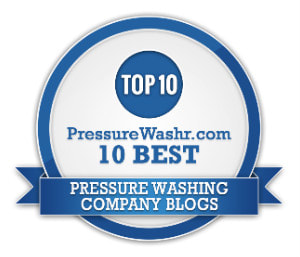|
Some older homes and commercial buildings in the Clearwater area can have roofs or cement siding that contain asbestos. Asbestos was commonly used as a component in many different building components between 1930 and 1950. Older building materials that contain asbestos can also include base flashing, cement wallboard, asphalt and vinyl floor tile and vinyl sheet flooring. Before the dangers of this substance were known, manufacturers commonly added asbestos to cement and other building materials because its fibers provided strength without adding substantial weight. Asbestos also has insulating and fire-resistant properties that initially made it a desirable component. The United States Consumer Product Safety Commission (CPSC) began eliminating asbestos from many building products beginning in about 1977. By 1989, the Environmental Protection Agency (EPA) completely banned all new applications of asbestos. If you own an older building, however, and have any of the above-mentioned materials, they could contain asbestos.
Asbestos Products are Long Lasting Durability is one of the reasons that asbestos was incorporated into building construction products such as roofs and siding. Thus, it is not uncommon to find asbestos roofing shingles and siding that are a half-century and older and still in great condition. Asbestos was commonly used in the Clearwater area because it doesn't rot or decompose in our humid climate, while it is also resistant to ants and termites. At the same time, however, these building elements are also susceptible to accumulating dirt, mold, mildew and other undesirable particles on the surface, leaving them dingy and unattractive. If the materials remain in good condition, roof cleaning via pressure washing would seem to be the answer, but it's not. Even when the roof, siding, stucco or other building materials in question are not friable, meaning that they are intact and not prone to crumbling, power washing materials with asbestos is illegal. The reason it is illegal is that pressure washing can break shingles, pieces of siding or sections of stucco that have weakened, thus releasing asbestos fibers into the air where it can be breathed in. What to Do If You Have a Roof or Siding Containing Asbestos Inert, or intact asbestos, presents no danger to you or anyone in your building. You can handle these products at no danger to yourself or anyone around you. That's why it doesn't make sense to replace a roof containing asbestos until it is past its useful life. Friable materials, meaning that hand pressure can break an item. Whenever friable material is present, you must take special remediation procedures to ensure that these fibers, which can cause cancer or mesothelioma, do not enter into the general environment. While some building owners may be well aware that their roof, cement siding or stucco exterior contains asbestos, others may not, particularly if the building has been sold several times since construction. You have several routes to determine whether your materials contain this substance. One involves sending an intact piece of the material in question to a lab for testing. The other is to have a certified asbestos inspector examine your property to determine what materials may contain this mineral. Once you have definitively determined that your roof, siding or stucco contains asbestos, you can proceed accordingly to clean the surface. Asbestos Roof Cleaning While asbestos roofs can't withstand pressure washing at high DPI, a lower pressure soft power wash can clean your roof. DPI Pressure Washing will take the proper steps to not only clean your asbestos roof but to ensure that none of the mineral enters the environment. The following steps should be taken when cleaning an asbestos roof:
Cleaning Asbestos Siding and Stucco Walls Cleaning siding or stucco walls containing asbestos is a slightly easier proposition as one does not have to get up on a ladder, however, the same precautions must be taken when attempting to remove moss, algae and general dirt that can accumulate on these surfaces. When attempting to remove organic growth from siding or stucco, combine one part bleach to three parts water and spray it on the growth. The bleach will kill the growth, allowing you to brush it off after several days. When washing surfaces containing asbestos, use a mild detergent and brush and use as light a touch as possible. Attempting this cleaning on your own, however, can take a long time and may not achieve the results you desire, so the job is best left to professionals. DPI Pressure Washing's Soft Pressure Wash Method When searching cleaning near me, it's important to find a company that knows how to handle asbestos-containing materials. DPI Pressure Washing uses a soft power wash with a gel bleach that is effective at removing organic matter as well as dirt and other undesirable particles. In addition, our professional staff will also contain all runoff as best as they can to ensure that no harmful particles reach the ground or the air. Our professionals in Clearwater are fully trained in how to use soft power wash for asbestos-containing materials. Don't take any chances by doing the job yourself. Let DPI Pressure Washing throughly cleaning your asbestos roof, siding or any other surface that may have this mineral as a component in a quick and safe manner. Contact us today for additional details. Get to know all pros and cons of pressure washing your roof Comments are closed.
|
Ella May + Luna Marie + Amelie Rose Munoz:We like to help our Dad to promote his pressure washing and window cleaning business in Clearwater and Tampa Bay. Hope you enjoy this blog ;-). Charlotta Munoz + kids
Categories
All
Archives
June 2024
|
Fully Licensed and Insured - Keep your mind at ease while we work for you.
100% Satisfaction Guaranteed - We never let a customer down!
Affordable and Prompt - We don't like to be late, or expensive.
100% Satisfaction Guaranteed - We never let a customer down!
Affordable and Prompt - We don't like to be late, or expensive.
Serving the Tampa Bay area since 1996!




 RSS Feed
RSS Feed






